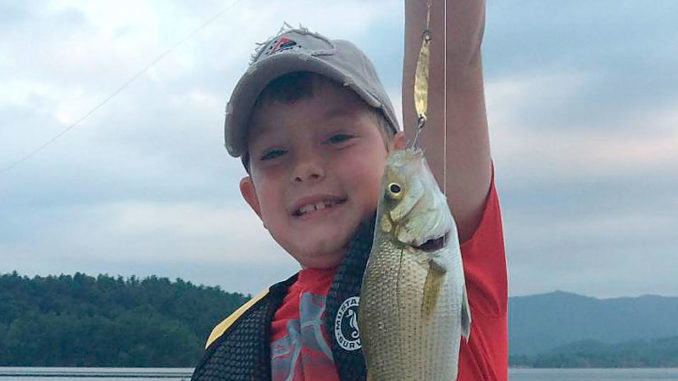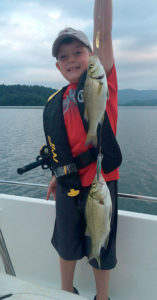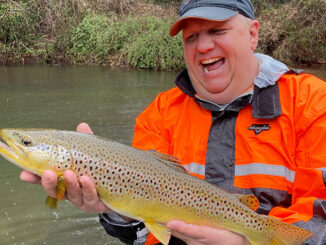
White perch come to forefront at Lake James as summer arrives.
Guide Colt Bass has been fishing North Carolina’s Lake James for most of his 37 years. And for as long as he can remember, white perch have been part of the fishery. He believes their numbers have increased in the past 10 years.
“Some anglers after other species consider them a nuisance fish. Others love them because they’re willing strikers and feisty battlers for their size,” said Bass, who runs Colt Bass Fishing. “Most rarely get bigger than your hand. They’re probably the most under fished species in the lake.”
Bass said catching white perch is frequently an all-or-nothing proposition.
“Lots of days I leave the lake with 30 to 50 fish, and lots of days I leave with five to 10,” he said.
White perch have often been described as the perfect fish for family trips. Anglers with limited skills can catch them a variety of ways with a variety of baits.
“For lures, I use anything in the boat,” he said. “There’s literally nothing they won’t hit.”

When Bass trolls, his bait spread include spoons, Shad Raps, Rebels, Rooster Tails and other small lures. Fishing under floats or with Sabiki rigs, he uses minnows, crickets or night crawlers.
Trolling covers lots of ground quickly
Of these techniques, Bass prefers trolling because that’s the technique he grew up using to target the lake’s walleye.
“I just feel like you cover so much more ground that way,” he said. “It’s also preferred if my party consists of youngsters or others with limited casting skills.”
During the spring, Bass looks for schools of white perch on points, ledges and dropoffs in 5 to 15 feet of water. During summer, he trolls the same structure, moving deeper and deeper as the weather warms.
“By the end of the summer, I’ll catch perch as deep as 50 feet around old roadbeds and river channels,” Bass said. “If I can’t find them there, I’ll randomly troll open water because they often school up, and structure isn’t a factor. I’ll find the schools with my sonar, note the depth and troll through them.”
Once fish are located, Bass said the four baits he has out often draw strikes all at once.
His trolling gear employs lead-core line and a clear leader of 4- to 6-pound monofilament. He also gets baits deep using downriggers with spinning tackle and clear, 4-pound mono.
Bass said white perch may favor a particular bait in his spread on certain days, and a few strikes tell which is the hot one.



